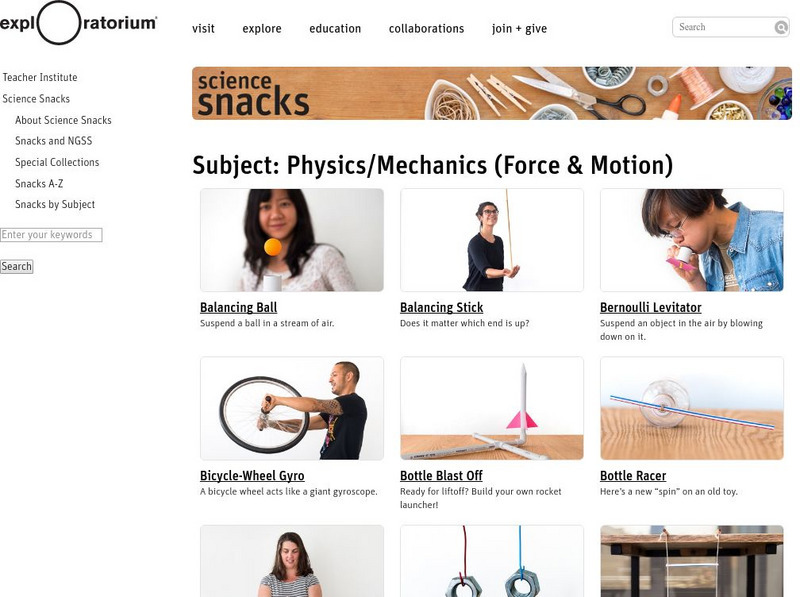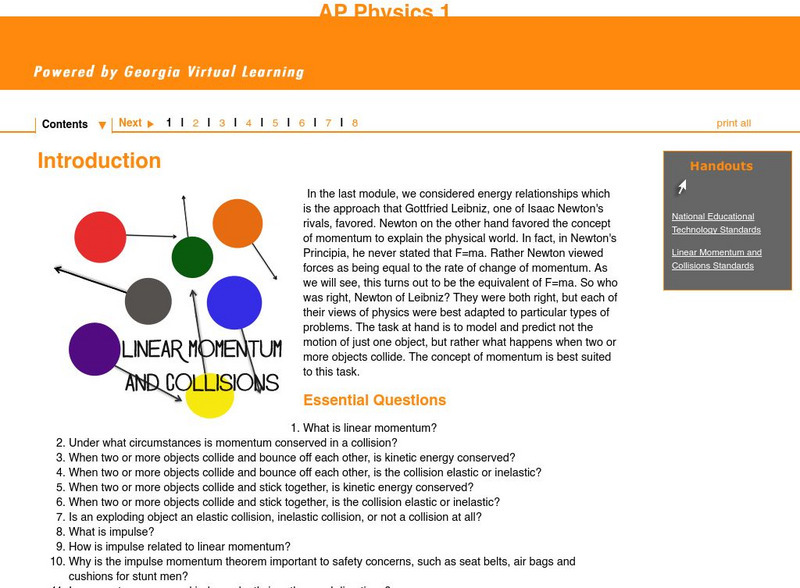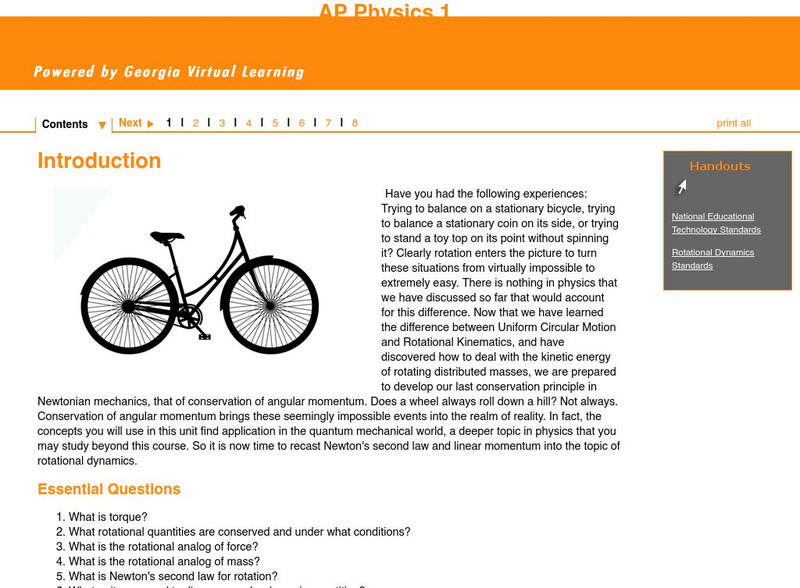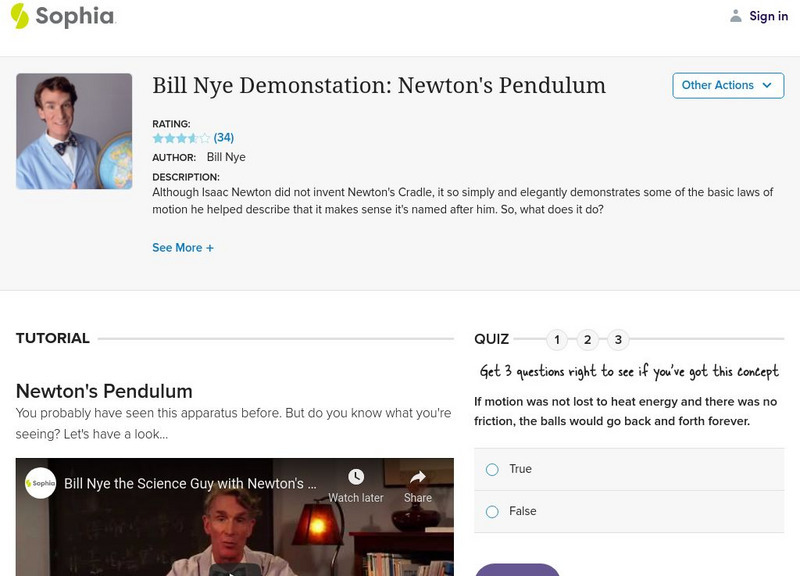Science Buddies
Science Buddies: Distance and Constant Acceleration
This project is an experiment in classical physics. You'll be following in Galileo's footsteps, and investigating Newton's laws of motion, using a metronome as your timing device. This resource will help you get a firm understanding of...
Georgia Department of Education
Ga Virtual Learning: Ap Physics 1: Simple Harmonic Motion
In this unit, students will discover the period of time of one oscillation, the frequency of oscillation, the object displacement, its velocity, and its acceleration. They will also discover how to apply the principles of conservation of...
Open Curriculum
Open Curriculum: Circular Motion
Students learn about uniform and non-uniform circular motion in this illustrated article.
Exploratorium
Exploratorium: Science Snacks: Physics/mechanics (Force and Motion)
A collection of mechanics activities. Many pertain to Newton's laws of motion. Step-by-step directions provided with illustrations. Great for teacher demos or student projects.
Open Curriculum
Open Curriculum: Velocity and Relative Motion
An illustrated article helps physics students learn about center of mass and velocity, and define the concept of inertia.
Open Curriculum
Open Curriculum: Force and Motion
This article helps students learn about Newton's laws of motion and the properties of force.
Georgia Department of Education
Ga Virtual Learning: Ap Physics 1: Rotational Kinematics and Energy
This module is the introduction to model rotational motion. All of the concepts are conveniently recast into forms that have the same mathematical forms as their translational counterparts.
Georgia Department of Education
Ga Virtual Learning: Ap Physics 1: Linear Momentum and Collisions
This physics tutorial aims to model and predict not the motion of just one object, but rather what happens when two or more objects collide. The concept of momentum will be the main focus of this module.
Open Curriculum
Open Curriculum: Newton's Laws in Three Dimensions
Students can use this article to learn about forces and motions in three dimensions.
Open Curriculum
Open Curriculum: Vectors and Motion
Learn more about the properties of velocity, acceleration, and force vectors in this illustrated article.
Open Curriculum
Open Curriculum: Free Waves
With this article, students can learn about and understand the concept of wave motion.
Other
Live strong.com: The Physics of Throwing a Football
Discussions on the subject of throwing a football are as common as chalk lines on a football field. Coaches and players talk about the proper grip, footwork and throwing motion, but few discussions mention the physics involved. Prolific...
Florida State University
Florida State University: Science, Optics & You: Sir Isaac Newton
Biography of Sir Isaac Newton (1642-1727), a scientist whose impact is felt in many disciplines today. His laws of motion are integral to basic physics, and he co-invented calculus.
Georgia Department of Education
Ga Virtual Learning: Ap Physics 1: Rotational Dynamics
Students learn about the Newtonian mechanics principle of conservation of angular momentum and the application in the quantum mechanical world.
Open Curriculum
Open Curriculum: Conservation of Angular Momentum
Students learn the concept of angular momentum of objects in two dimensions and how rotational motion is determined.
Sophia Learning
Sophia: Bill Nye Demonstration: Newton's Pendulum
Learn about Newton's Pendulum will Bill Nye as you watch this demonstration of some of the most fundamental laws of physics and mechanics. [0:52]
Open Curriculum
Open Curriculum: Analysis of Forces
This study information helps students apply Newton's third law and understand forces.
Khan Academy
Khan Academy: Conservation of Angular Momentum Review
Review how angular momentum is conserved if there is no external torque applied to a system. Specific scenarios are highlighted: system changing it rotational inertia, orbiting bodies, and rotational collisions.
Texas Education Agency
Texas Gateway: 4.8 Extended Topic: The Four Basic Forces: An Introduction
By the end of this section, you will be able to understand the four basic forces that underlie the processes in nature: gravitational, electromagnetic, weak nuclear, strong nuclear forces.
Khan Academy
Khan Academy: What Are Velocity vs. Time Graphs?
Graphs and examples help explain what the vertical axis, slope, and area represent on a velocity-time graph.

















